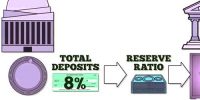Electronic Funds Transfer
This electronic mode of remittance of funds is enabled by the participating banks under the supervision of the central bank of the country. The amount sent from the sender’s bank branch is credited to the receiver’s bank branch on the same day or at the most the next day. This facility saves the effort of sending a demand draft through a post and the inherent delay in reaching the money to the receiver. Banks may charge a commission for using this service. It is used for both credit transfers, such as payroll payments, and for debit transfers, such as mortgage payments.
It is a transaction that takes place over a programmed set-up, either among accounts at the similar bank or to different accounts at separate financial institutions. One of the most widely-used EFT programs is Direct Deposit, in which payroll is deposited directly into an employee’s bank account, although EFT refers to any transfer of funds initiated through an electronic terminal, including credit card, ATM, and point-of-sale (POS) transactions. This system ensures that managerial costs are less as the direct interference of bank workforce is not required, and thus the cost savings is greater. Another advantage is that an electronic funds transfer system provides great security and protection to the funds.
Types of EFT payments –
- There are many ways to transfer money electronically.
- Direct deposit lets you electronically pay employees.
- Wire transfers are a fast way to send money.
- ATMs let you bank without going inside a bank and talking to a teller.
- Debit cards allow you to make EFT transactions.
- Electronic checks are similar to paper checks but used electronically.
- Pay-by-phone systems let you pay bills or transfer money between accounts over the phone.















